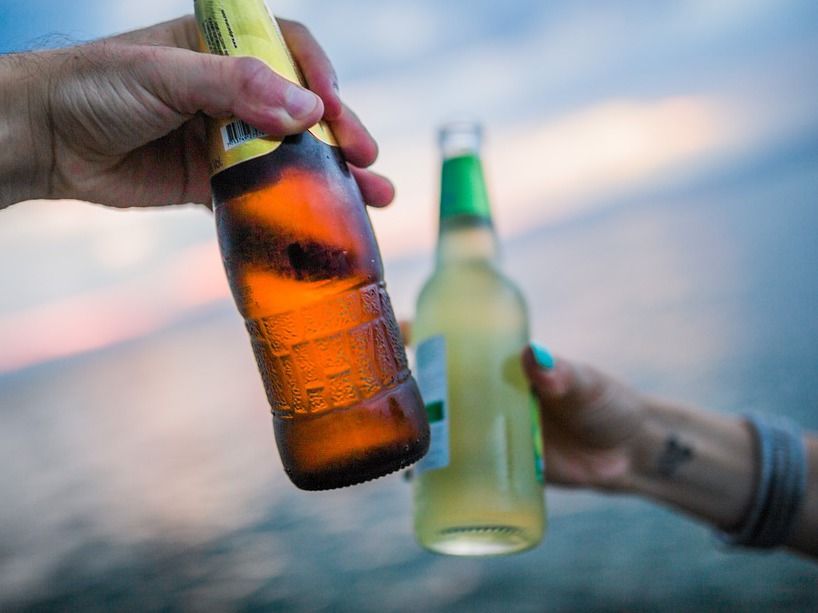Alcohol consumption and risks increasing globally
While alcohol consumption in Europe is declining, the global average is rising - especially middle-income countries such as China and India have increased over the past three decades. The results of an international study led by psychologists from TU Dresden suggest that WHO is unlikely to meet its target: Global alcohol consumption should be reduced by ten percent by 2025. The sobering prognosis of the study for 2030: per capita consumption will even increase, from currently 6.5 to 7.6 litres of pure alcohol per year. The study has now been published in the renowned medical journal The Lancet.

symbol image
Foundry/ Pixabay
The German-Canadian collaboration around Prof. Jürgen Rehm, head of the Addiction Epidemiology Research Group at Dresden Technical University, examined alcohol consumption in 189 countries from 1990 to 2017 with a view to 2030. Prof. Rehm sums up: "The predictions were significantly higher than expected. The results are required by the United Nations for its reporting as well as in the Global Burden of Disease Study and the WHO Global Status Reports. First author Jakob Manthey, Diplompsychologe at the Institute for Clinical Psychology and Psychotherapy at the TU Dresden, explains: "According to our figures, the WHO's goal of reducing harmful alcohol consumption by 10 percent by 2025 will not be achieved globally. We need an effective alcohol policy, especially in countries that are developing rapidly and are experiencing growing alcohol consumption."
7.6 litres of alcohol per year, which corresponds to about 410 millilitres of beer per day - on average. But those 53 percent of the world's population who lived abstinently in 2017 are not involved in these 410 milliliters, and marginally only those who only drink on weekends and holidays. What remains is a much higher average consumption for habitual drinkers. Alcohol is a significant health risk factor and is associated with over 200 diseases. Since 1990, the volume of alcohol consumed has increased by 70 percent, also due to population growth. In 2030, according to the forecast, half of all adults will drink regularly, around a quarter will drink at least once a month - more precisely, 60 grams (3 bottles of beer of 0.5 litres each) or more alcohol at one time.
While the volume remains stable in affluent countries, even declining slightly per capita, it has grown particularly in low and middle-income countries.
"Alcohol consumption is widespread worldwide, but with clear regional differences that can largely be attributed to religion, alcohol policies and economic growth," Manthey says. "The growing alcohol market in middle-income countries is estimated to outweigh declining consumption in high-income countries, leading to an overall global increase.
Southeast Asia and China in particular are leading the global upward trend. The highest growth rates in alcohol consumption were recorded in India and Vietnam. Although Europe is still the leader with a per capita volume of 9.8 litres of alcohol per year, Southeast Asia, with 4.7 litres, is far below this; however, the growth in this region between 1990 and 2017 by 104 per cent, since 2010 at least by 34 per cent, see model calculations as a trend that should catch up with the European alcohol volume in 2030. According to forecasts, the western Pacific region with China will even be significantly higher. However, some regions are hoping for healthy trends: Eastern European consumption has fallen sharply. The lowest alcohol rates are recorded in the Middle East and North Africa.
In addition to slight fluctuations in life-long abstinence, which has fallen from 46 to 43 percent of the world's population, and the marginal increase in intoxication, the authors emphasize that the volume of alcohol consumed is growing faster than the number of drinkers - and thus also per capita consumption.
In order to limit alcohol consumption, researchers propose, for example, higher taxation, restrictions on availability or advertising bans.
Germany is forecast to remain among the highest alcohol rates in the world with at least 12 litres per capita per year. By the way, the study shows clear differences between the sexes: Central European women drink less than one third of the amount of alcohol consumed by men with 17.8 litres (5.3 litres per year). The gender-specific distribution of consumption on the global average is similar: 2.7 litres per year for women compared with 9.8 litres per year for men.
Note: This article has been translated using a computer system without human intervention. LUMITOS offers these automatic translations to present a wider range of current news. Since this article has been translated with automatic translation, it is possible that it contains errors in vocabulary, syntax or grammar. The original article in German can be found here.




























































